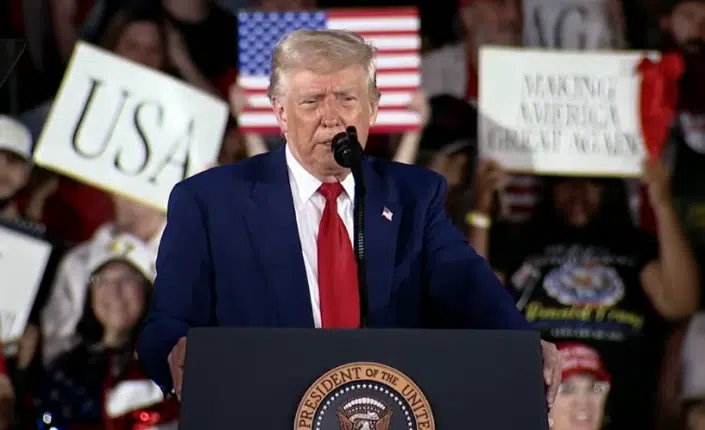By Robert Romano –

Only, Media Matters is wrong. It cites Section 3(c) of the bill that amends Section 4233 of the Employee Retirement Income Security Act of 1974, which does indeed define a qualified multiemployer pension plan as those in “critical status.” But it also states that those in “endangered status” that share characteristics of those in the “critical” category and meet other specific requirements are eligible for a partition bailout, too.
FOX Business’ unfunded liabilities numbers are based on the 2009 Moody’s report that included 108 underfunded multi-employer pension plans totaling $165 billion in unfunded liabilities. 61 percent of those plans are already in “critical” condition as defined by the 2006 Pension Protection Act, with less than 65 percent funding. That includes the MLBPA, the NFLPA, nine Teamster plans, and 55 other eligible plans.
24 percent are right on the cusp of becoming “critical,” with less than 71 percent funding, with the remaining 15 percent between 80 and 71 percent funding. Should the bailout pass, the incentive would be in place for both “endangered” and “critical status” plans to dump as much of the pensions as they can into these Pension Benefits Guaranty Corporation (PBGC) partition bailouts — upwards of $165 billion.
How? According to the Manhattan Institute’s Diana Furchgott-Roth, the Casey bill will “allow failing multiemployer pension funds to form alliances and merge where such mergers would reduce PBGC’s losses. Plans that have been financially prudent could lose, because they could be merged by PBGC with failing plans, with PBGC funding failed plans… By bailing out the plans, Congress would be compromising the remedial provisions of the Pension Protection Act of 2006. The Act requires underfunded pension plans to put their houses in order by raising retirement ages; increasing contributions by employers, workers, or both; and lowering benefits. A bailout would remove any incentive for multiemployer pension plans to reorganize their plans responsibly.”
Which is the problem, because the bill guarantees that PBGC will pay for all “partitioned” benefits. According to the National Coordinating Committee for Multiemployer Plans, which supports the legislation, under the House version of the bill proposed, “in the event of a ‘Qualified Partition,’ as defined in the bill, PBGC would guarantee 100% of the benefits that are partitioned off.” So, for example, Teamster Local 804 and Local 447 UPS Multi-Employer Retirement Plan, which is only 38 percent funded according to Moody’s data, could have 62 percent of its unfunded benefits paid for by somebody else.
While the Moody’s analysis shows that there is currently $165 billion in unfunded pension liabilities, the effect of the legislation will be to encourage those still-solvent or endangered funds to engage in systematic underfunding with assurances that the pension liabilities will be met by the federal government. Meaning, the $165 billion in unfunded pension liabilities will likely grow — as a direct result of the legislation.
The way this bill is structured, the more poorly the pension was administered, the greater the PBGC bailout. This creates an obvious disincentive to manage pension plans well. Which plan would not want to take advantage of such a handout?
In principle, a plan could be less than 1 percent funded, and be eligible for the bailout, because while the legislation provides a minimum floor of unfunded liabilities to be eligible, there is no ceiling. That’s madness.
Making matters worse, the effect of the legislation will be to create more liability exposure for the PBGC without any new source of revenue. Cassie Smedile, Press Secretary of Representative Ginny Brown-Waite, a cosponsor of the House version of the bill, confirms this, “The bill does not provide a nickel to any pension fund.”
The problem is, she’s right. The bill does not provide additional funding for the PBGC to soak up the new partition bailouts. It simply creates a broad dumping ground for unfunded pension liabilities.
In short, the bill merely transfers the unfunded liabilities from the pension plans, to the PBGC, which is guaranteed by taxpayers.
The money has to come from somewhere. So, solvent funds and employers will be forced to pay for the insolvent funds. And when that fails, taxpayers will be on the hook, because Congress will never allow the PBGC to fail. In fact, the bill guarantees that Congress will be forced to appropriate more money for the PBGC to pay annually for these unfunded liabilities.
For these reasons, Americans for Limited Government opposes this legislation, which will make eligible for bailouts unions like the Teamsters, which are explicitly advocating for the bailout. Teamsters Local 776 shop steward Dave Wolf leaves no doubt about it, who believes he is entitled to a bailout: “The government says it has to bail out the banks when they get into trouble because they’re ‘systemically important.’ Well, we’re the people who move the goods and pay the mortgages and support our communities. I think we’re ‘systemically important’ too.”
Even the unions that would be eligible for the bailout are making no qualms about the fact that this is indeed a bailout. And it could cost upwards of $165 billion, if the “endangered” and “critical status” plans manage to dump all of their unfunded liabilities onto the PBGC. FOX Business was right.
Robert Romano is the Senior Editor of ALG News Bureau.






